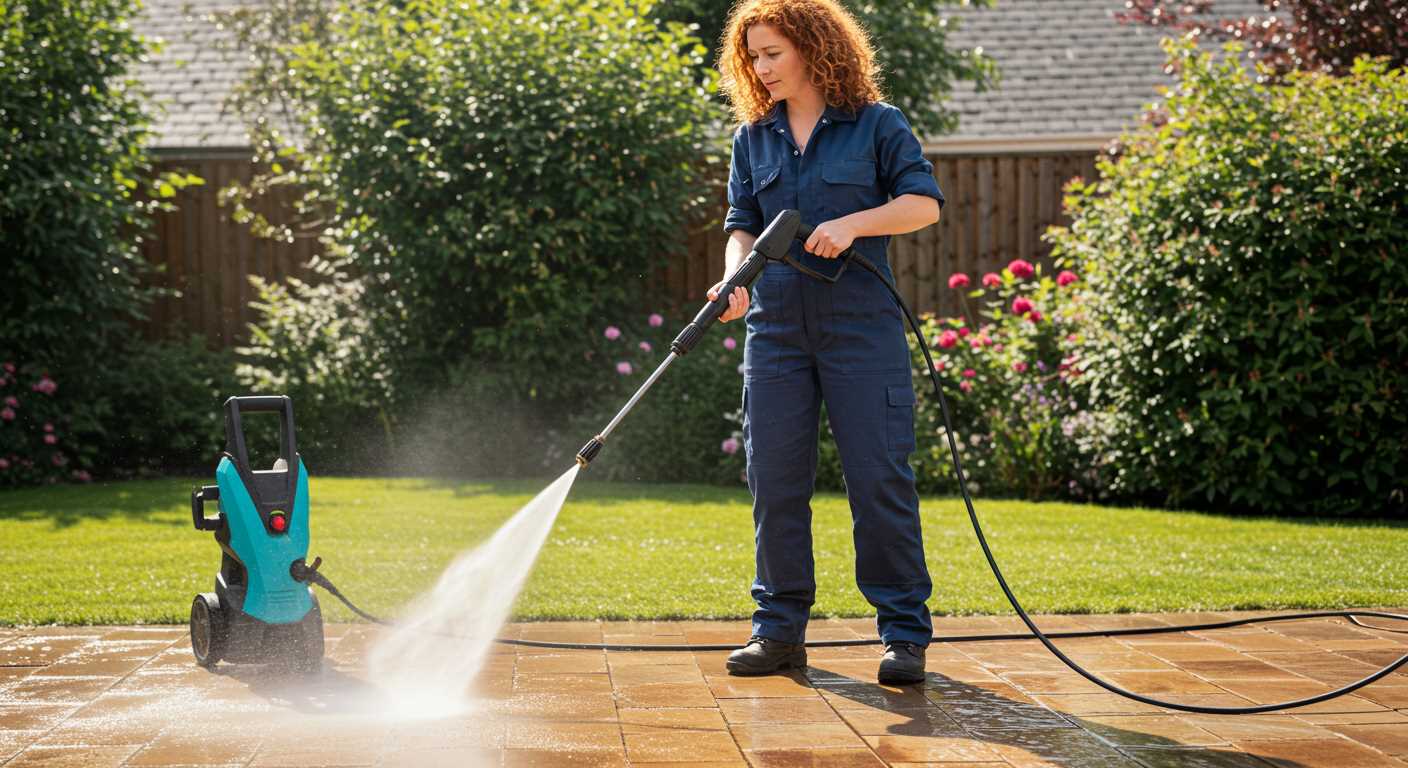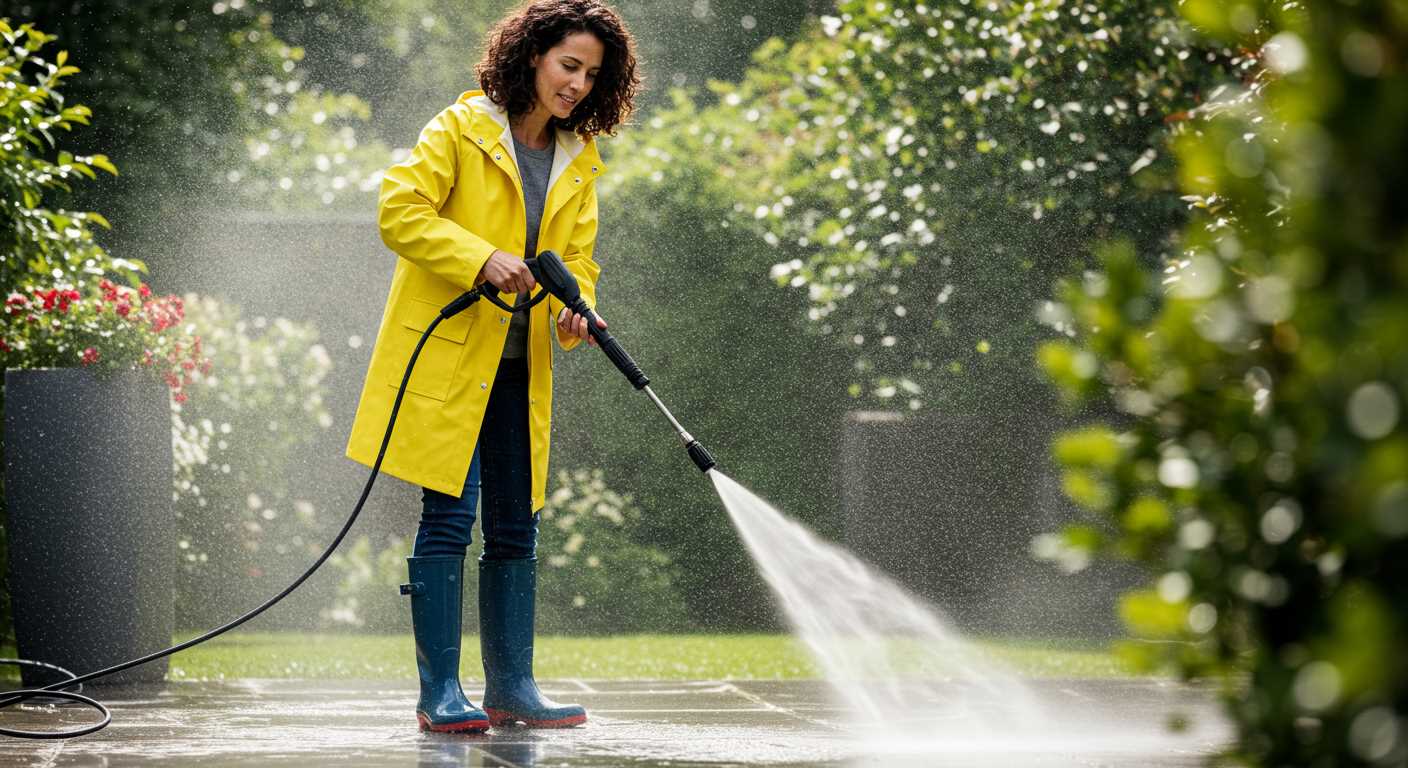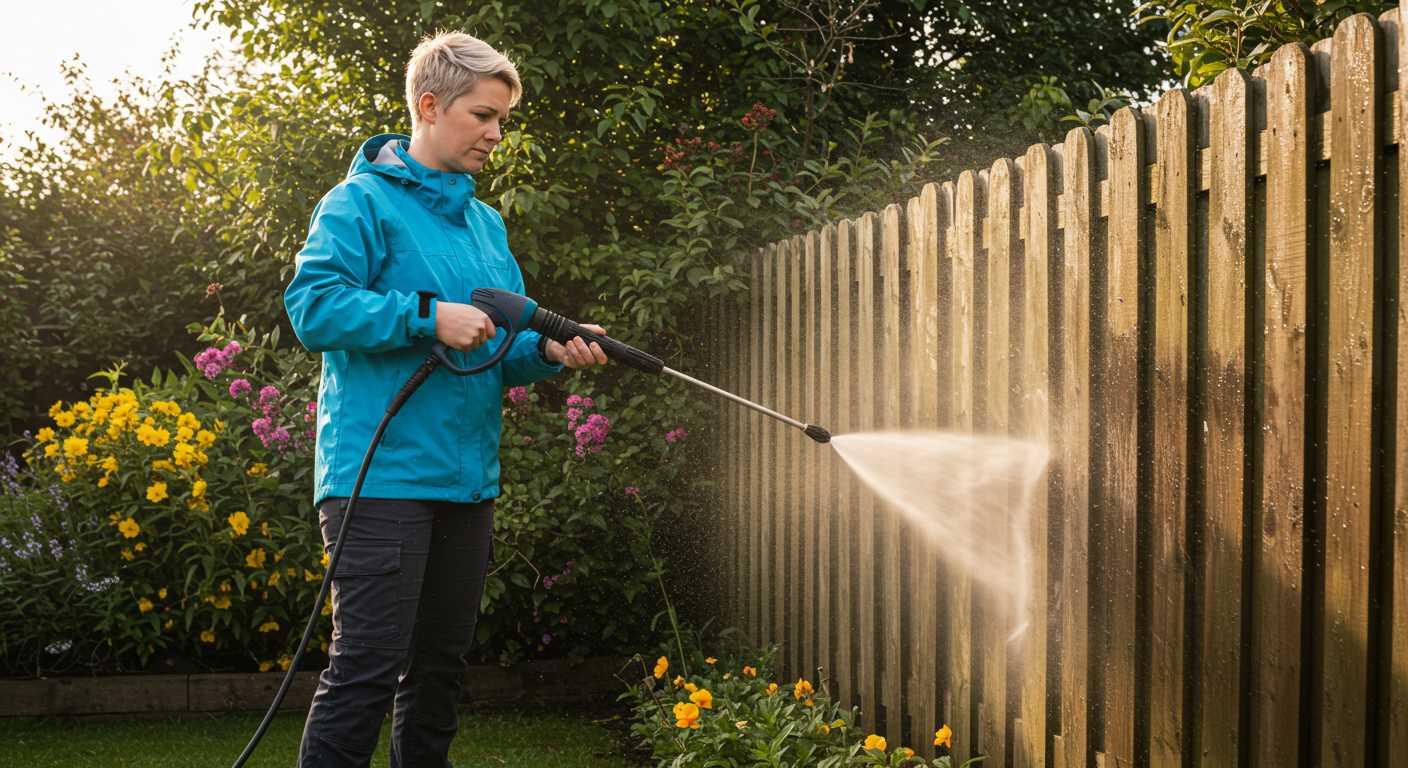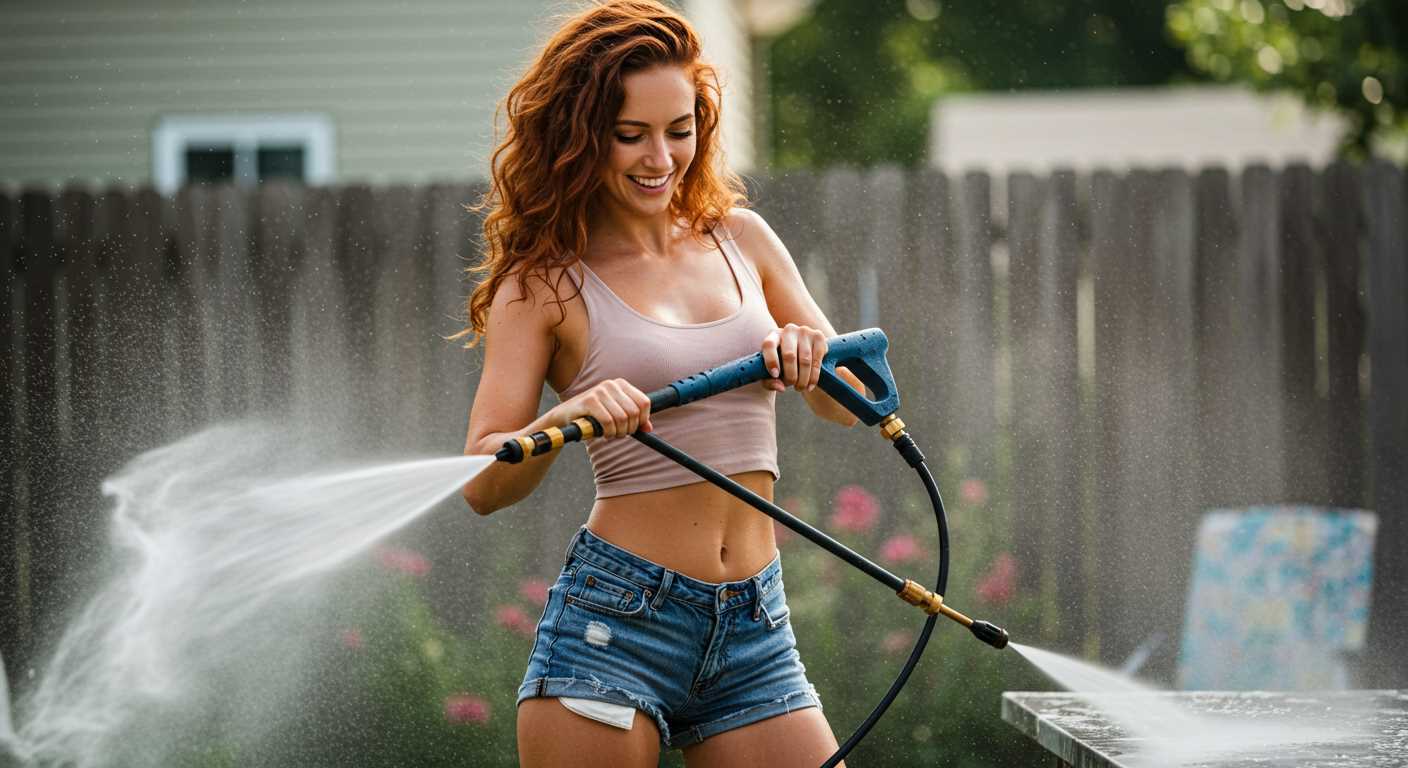



Bleach is not recommended for electric cleaning units. This substance can cause damage to internal components and lead to costly repairs. Chemicals present in bleach may corrode seals and other parts designed to withstand water only.
To maintain the longevity of the equipment, it’s advisable to stick with detergents specifically designed for pressure cleaning systems. These cleaning agents effectively tackle mould, mildew, and tough stains while ensuring compatibility with the materials used in the machine.
If there is a need to treat surfaces with bleach for heavy-duty cleaning, consider applying it separately with a garden sprayer. Once the surface has been treated and allowed to sit, rinse thoroughly with plain water before using a high-pressure cleaner for optimal results. This method protects the equipment and maximises overall cleaning efficiency.
Understanding the Risks of Using Bleach in Pressure Washers
Utilising chlorine-based products in a high-pressure cleaning machine can lead to severe damage. The corrosive nature of this substance can deteriorate components, hoses, and seals over time, resulting in costly repairs or replacements.
Potential Damage to Equipment

The internal parts, including pumps, are particularly susceptible to this harsh chemical. Many manufacturers expressly warn against the use of such substances as it compromises the integrity of the equipment. Damage may not be immediately visible, but the long-term impact can be significant, often leading to malfunction.
Health and Environmental Concerns
Inhalation of bleach fumes poses health risks, causing respiratory issues. Additionally, runoff into gardens or water supplies can harm plants and aquatic life. Always consider alternative, eco-friendly cleaning agents that are specifically formulated for use with cleaning machines, preserving both your equipment and the environment.
Manufacturer Guidelines for Bleach Usage
Always consult the user manual that accompanies the cleaning equipment. Most manufacturers discourage the incorporation of harsh chemicals due to potential damage. For instance, components such as seals, hoses, and pumps may deteriorate with prolonged exposure to strong agents.
Specific models may come with guidelines that detail permissible cleaning solutions. Look for any recommendations or warnings regarding chemical concentrations to ensure safe handling.
Some brands offer compatible products designed for sanitising purposes. These alternatives can provide effective cleaning without compromising the integrity of the machine.
Observe any indications of wear or corrosion on internal and external parts after attempting to use chemical additives. This can serve as a warning that the chosen cleaning agent may not be appropriate.
If allowed, always dilute according to specified ratios to minimise risk. A thoughtful approach can prevent adverse reactions and prolong the lifespan of the equipment.
Compatible Cleaning Solutions for Pressure Washers
For optimal results with a high-pressure cleaning machine, select solutions specially formulated for powerful cleaning applications. Industry standards recommend various types of detergents that ensure both safety and effectiveness while preserving the equipment’s integrity.
| Type of Cleaning Solution | Description | Recommended Use |
|---|---|---|
| BIODEGRADABLE DETERGENTS | Environmentally friendly formulas that break down naturally. | Use for general cleaning tasks, such as removing dirt and grime from surfaces. |
| CARPET AND UPHOLSTERY CLEANERS | Formulations designed to treat stains on fabrics. | Best for cleaning outdoor fabric furniture or carpets. |
| ALL-PURPOSE CLEANERS | Versatile solutions suitable for various surfaces. | Ideal for driveways, patios, and siding. |
| WINDOW CLEANERS | Specially designed to leave glass streak-free. | Perfect for cleaning windows and glass surfaces. |
| FOAMING AGENTS | Creamy formulas that cling to surfaces for deeper penetration. | Recommended for degreasing vehicles or outdoor equipment. |
Avoid aggressive chemicals such as ammonia and acid-based cleaners that can damage the internal components. Always consult the user manual for guidance on approved products to safeguard the equipment and enhance its lifespan.
Experimenting with various safer alternatives can yield excellent results without compromising efficiency or damaging delicate surfaces. Products labelled specifically for high-pressure cleaning machines will ensure compatibility.
For stubborn stains or heavy-duty tasks, pre-treatment with suitable solutions is advisable. Allowing the cleaner to sit for a few minutes before rinsing helps tackle the toughest residues effectively.
Impact of Bleach on Pressure Washer Components

Adding chlorine-based solution to any cleaning device can lead to severe deterioration of key components. Many models feature seals, o-rings, and hoses made from materials like rubber or plastic, which bleach can corrode, leading to leaks and component failure over time.
Corrosion of Internal Parts

Internal components such as pumps and valves are particularly vulnerable. The chemical reaction that occurs when bleach is introduced can cause premature wear and damage, ultimately affecting the performance of the machine. Metal components may also experience rusting or pitting, compromising structural integrity.
Impact on Spray Nozzles and Filters
Nozzles often made from plastic can become fragile and more susceptible to breakage. Filters may also clog or disintegrate, disrupting cleaning efficiency. Regular exposure to chlorine can necessitate early replacement of these parts, leading to increased maintenance costs.
Alternatives to Bleach for Stain Removal
Hydrogen peroxide offers an effective alternative for eliminating stubborn stains. It acts as a powerful oxidiser, readily breaking down organic materials and lifting discolouration from various surfaces. To employ hydrogen peroxide, mix it with water in a 1:1 ratio, apply it to the stained area, and leave it for 10-15 minutes before rinsing. This approach is safe for most materials, including fabrics and concrete.
Vinegar, another common household item, excels in tackling mildew and grime. Its acidity not only helps in stain removal but also neutralises unpleasant odours. For optimal results, blend equal parts vinegar and water, spray onto the affected area, and scrub gently before rinsing off.
Baking soda serves as an excellent abrasive cleaner, particularly effective on tougher stains. Create a paste by mixing baking soda with a small amount of water and apply it directly to the stain. Scrub gently before rinsing. This method is especially beneficial for non-porous surfaces, such as tiles and countertops.
Commercial stain removers designed to be compatible with your cleaning device can also provide reliable results without the risks associated with harsh chemicals. Look for products that specify their safety for your particular equipment and follow the manufacturer’s instructions for best outcomes.
For organic stains, enzymatic cleaners can break down proteins and eliminate marks effectively. These formulations are particularly useful on fabrics and carpets where stains from food or pets are common.
Proper Dilution and Application Techniques for Bleach
Optimal dilution is vital when incorporating chlorine-based cleaners with washing equipment. For effective results, a typical ratio is around 1 part bleach to 10 parts water. This ensures sufficient strength for stain removal while minimizing risk to machinery components.
Preparation Steps

- Always wear protective gloves and goggles to safeguard against splashes.
- Utilize a clean container for preparing the solution to avoid contamination.
- Mix the solution slowly to prevent foaming and ensure thorough blending.
Application Techniques

- Start by testing the diluted solution on a small, inconspicuous area to gauge results.
- Apply using a low-pressure setting to prevent damage to surfaces and equipment.
- Allow the solution to sit for a short period, approximately 5-10 minutes, to penetrate stains but avoid letting it dry completely.
- Rinse thoroughly with clean water to remove all traces of the cleaning agent.
Proper handling and application can enhance cleaning efficacy while preserving the longevity of the machinery. Keep all surfaces well-ventilated during the procedure to disperse vapours effectively.
Cleaning and Maintenance After Using Bleach
Thorough cleaning after working with chlorine-based solutions is crucial to prevent damage and ensure longevity of equipment. Follow these steps diligently:
- Immediately flush the system with fresh water. Run the device for at least 5-10 minutes to clear pipes and nozzles of any residual chemicals.
- Check all components for signs of corrosion or residue. Pay special attention to seals, hoses, and the pump.
- Inspect and clean the nozzle. Remove any buildup that may have formed due to chemical interaction.
- Rinse external surfaces and connectors. A mixture of mild soap and water can help remove any surface stains.
- For models with filters, clean or replace them after every use involving harsh agents. This ensures optimal performance in future operations.
- Store the equipment in a dry place. Consider placing silica gel packs in the storage area to absorb any humidity.
Maintaining a regular cleaning schedule after using harsh cleaning agents will vastly increase the lifespan of your apparatus and enhance its efficiency. Regular checks are paramount in early detection of issues.
Documentation from the manufacturer may provide additional maintenance tips specific to your model, ensuring you follow recommended practices.








